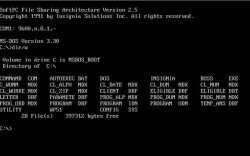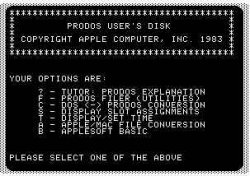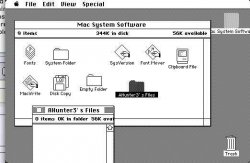To answer some of your "history in a nutshell" questions:
1.
This entire article is interesting, but in particular go
here, the page that covers the 4 years just prior to the introduction of the Apple Macintosh, i.e., the years during which it was in development. Scroll to the bottom to see the market share graph. As you can see, the IBM-PC wasn't some kind of monolithic presence in the market, with Apple performing some kind of silly Don-Quixote nonconformist act. The market was split and variegated and none of the platforms were very compatible with any of the others. So there was absolutely no reason for Apple to
not design and release an entirely new design of computer.
2. Apple had a vision of a computer that would totally revolutionize the personal computer. It would have a graphical user interface (GUI). It would use a mouse. It would have menus from which commands would be issued. Their first deployment of this vision was an expensive model aimed at the business office, called the Lisa. The far more successful Macintosh followed a year later. At a time when all other personal computers were text-based screen, command-line or numbered-menu driven, these Apple computers let you point and click. See screen shots below.
3. Apple got a lot of inspiration for the GUI from Xerox. Some people say that Apple stole the OS from Xerox but
that isn't so. The OS used on the Xerox machines was not borrowed, stolen, or bought; instead, its ideas, the concepts, the
motif of using a mouse and on-screen icons, having been seen there, were reimplemented from scratch at Apple. (Not without permission from and payment to Xerox, btw). In case it isn't obvious, the Xerox computers that had GUIs the Alto and the Star *were not computers that you would buy at the Computer store and take home with you and install software. They
weren't personal computers and weren't marketed or priced as such. It was more of a minicomputer like the Digital Equipment VAX and probably cost around $25000-30000.
4. The hegemony of the PC occurred for two main reasons. First off, none of the companies making personal-sized computers was a traditional business-centric company, and using such machines was regarded as a "hobbyist" kind of thing, until IBM released the PC. IBM, producer of huge business mainframe computers and the Selectric printball typewriters on every executive secretary's desk,
was such a company. Then, once the IBM-PC had a solid lead in the business environment, their architecture was cloned by other manufacturers. IBM did not license this, IBM did not encourage this, and it took away market share from IBM when it happened. What made it possible for it to happen was that IBM used off-the-shelf parts for the PC instead of designing their own from scratch, and they contracted to another company, Microsoft, to produce and maintain the operating system instead of doing OS design in-house. So keep that in mind when folks talk about why Apple should've licensed their architecture like IBM did. That's not how it was. But it did happen, and the price wars made PCs cheap.
5. Microsoft came out with its own graphical user interface OS, Windows, but I believe that the first version, although it did draw square windows representing directories & etc, was still text-based, designed to work with a text-based screen like most PCs had back then. And the windows would not overlap. No one bought. They made improvements and by Windows 3.1, it was a true GUI (you needed a VGA monitor with actual pixels). It worked a lot like a Mac: double-click things and they open or they launch; click and drag and they move. Overhead menus. The next major version, Windows95, converged even more with the MacOS the separate Program Manager and File Manager were ditched in favor of a more Mac-like unified Finder-like environment; you could have actual files on your Desktop, like a Mac; there was a Trash Can equivalent (the Recycle Bin) and a customizable Apple Menu equivalent (the Start Menu) and the equivalent of aliases (shortcuts) and individual document icons now had distinctive appearances that indicated what kind of document they were, just like on a Mac. And for the first time, Microsoft had features that the Mac would end up copying later: the contextual right-click menu (present but useless under Windows 3.x), the even-longer file names (the Mac did 32 characters, earlier Windows and DOS did only 8 plus a 3-character file extension), and some industrial-strength OS features (preemptive multitasking and protected memory) even though the Windows95 implementations of these were very buggy and imperfect, the MacOS just didn't have them at all.
Be that as it may, Windows95 still lacked a lot of things the MacOS had, or had more sophisticated versions of: multiple monitor (extended desktop) support, speedier file-level operations, sophisticated file-finding, zero-configuration local-area networking, excellent color-management, font management, and precision graphics routines, ability to boot from almost any device containing a copy of the OS (second internal drive, external drive, Zip drive, Jaz drive, CD-ROM, PCMCIA Card, you name it) and so forth; and Windows still came encumbered with lots of negatives that the MacOS was free from: path-dependencies and the registry making it difficult-to-impossible to move applications and still use them; by extension from that, inability to run applications located on a different machine over the network; the morass of ".dll" files used by multiple apps that wanted different vintages, to the point that installing any piece of software could make anything else unstable, including the OS itself; the horrid "multiple document interface" (MDI), or "document-window-within-an-application-window" modality which made graphic multitasking nearly impossible; the operating system's clipboard wasn't as versatile about transferring information (especially formatted text) from one app to another; and installing new hardware generally required far more headaches of driver-installation and configuration than the equivalent maneuver on the Mac.
No two ways about it, though, the Microsoft OS was no longer a laughable relic that was only market-competitive with the MacOS for unrelated reasons. We Mac folks had reason for preferring MacOS 7.x, 8, and 9 over Windows95 and Windows98, and different ones for preferring ours over NT, but it was at least believable that someone could, conceivably, actually like those other operating systems, could even perhaps prefer them, without being certifiably
non compos mentis or lying when they said it.
And a word about the old MacOS: it did a far better job of handling memory than Windows 3.x, and in many ways a better job of handling a large amount of memory than Windows95/98/ME, despite not having protected memory. And its cooperative multitasking worked far better than, by rights, it should've, making it a viable OS long after preemptive multitasking was necessary in anything else that would be considered a "modern" OS. Individual badly-coded programs could break it, but you could run an impressive slew of well-coded ones side by side if you had the RAM for them. Windows users with their (allegedly) preemptive multitasking and protected memory would be amazed to find us able to run 15, 20, 30, 40 applications concurrently. And we could. (There are MacOS X users who find it hard to believe, too!).




